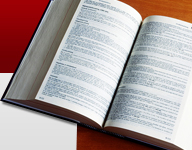Fed Signals That a Full Recovery Is Years Away

By BINYAMIN APPELBAUM
Published: January 25, 2012
Related
Economix Blog: Behind Closed Doors at the Fed (January 25, 2012)
The Fed said that it now planned to keep short-term interest rates near zero until late 2014, continuing the transformation of a policy that began as shock therapy in the winter of 2008 into a six-year campaign to increase spending by rewarding borrowers and punishing savers.
The economy expanded "moderately" in recent weeks, the Fed said in a statement released after a two-day meeting of its policy-making committee, but jobs were still scarce, the housing sector remained deeply depressed and Europe's flirtation with crisis could undermine the nascent domestic recovery.
The Fed forecast growth of up to 2.7 percent this year, up to 3.2 percent next year and up to 4 percent in 2014, but at the end of that period, the central bank projected that the recovery would still be incomplete. Workers would still be looking for jobs, and businesses would still be looking for customers.
"What did we learn today? Things are bad, and they're not improving at the rate that they want them to improve," said Kevin Logan, chief United States economist at HSBC. "That's what they concluded — 'We've eased policy a lot, but we haven't eased it enough.' "
The economic impact of the low-interest rate extension, however, is likely to be modest. Many businesses and consumers can't qualify for loans, a problem the Fed's efforts do not address. Moreover, long-term rates already are at record low levels and, like pushing on a spring, the going gets harder as it nears the floor. Finally, the Fed already was widely expected by investors to hold rates near zero well into 2014, limiting the benefits of a formal announcement.
"I wouldn't overstate the Fed's ability to massively change expectations through its statements," the Fed's chairman, Ben S. Bernanke, said at a press conference Wednesday after the announcement. "It's important for us to say what we think and it's important for us to provide the right amount of stimulus to help the economy recover from its currently underutilized condition."
The Fed's plans for interest rates were unveiled amid a barrage of statements the central bank released Wednesday as part of its campaign to improve its transparency. And while it pleased some investors in the markets, it left others befuddled. The Dow Jones industrial average, which had been down in the morning, began rising steadily after the Fed released its statement at about 12:30 p.m. Wednesday. The Dow finished the day up 81.21 points at 12,756.96.
First came the Fed's traditional statement, released after each meeting of its policy-making committee, which said that the central bank intended to hold short-term rates near zero "at least through late 2014."
Ninety minutes later, the Fed published for the first time the predictions of the committee's members on when they would raise interest rates. It showed that 11 of the 17 members expected the Fed to raise rates by the end of 2014. Taken together, the documents suggested that the Fed expected to keep rates near zero until late 2014, but probably not any longer than that.
Since the beginning of the financial crisis in 2007, the Fed has alternated bursts of activity with periods of rest, concluding several times that it had done enough only to find the economy still struggling to recover. The Fed announced last summer that the central bank intended to keep interest rates near zero through at least the middle of 2013, and that it would seek to reduce long-term interest rates through changes in the kinds of investment securities it holds. Since then, two meetings had passed without the introduction of any new programs.























